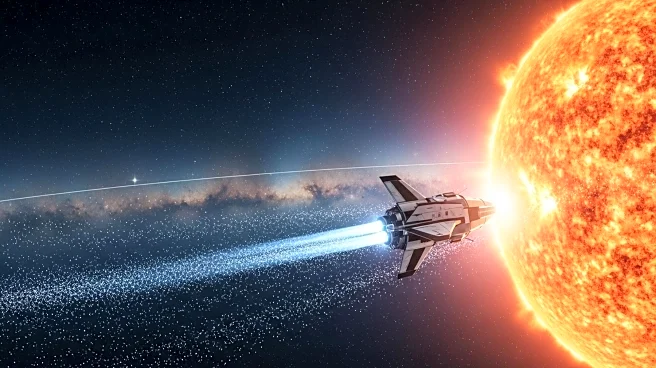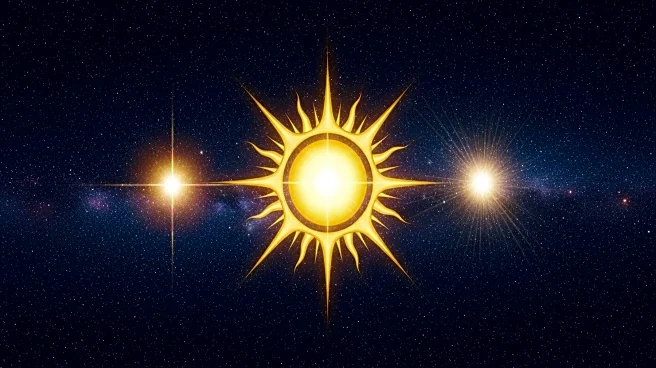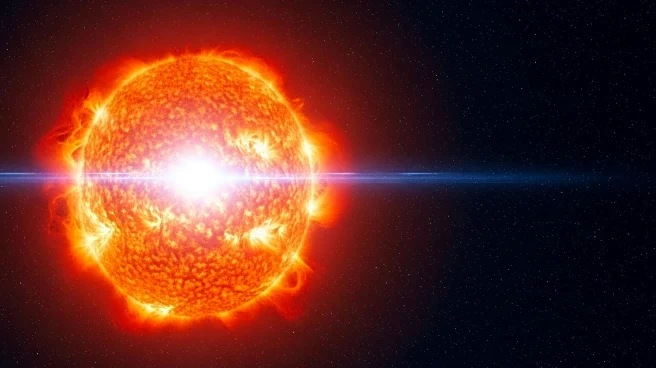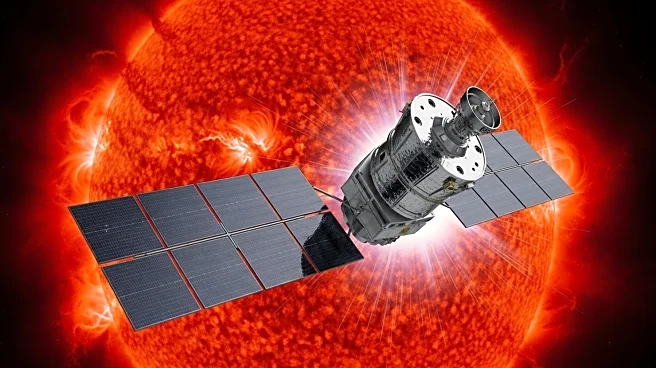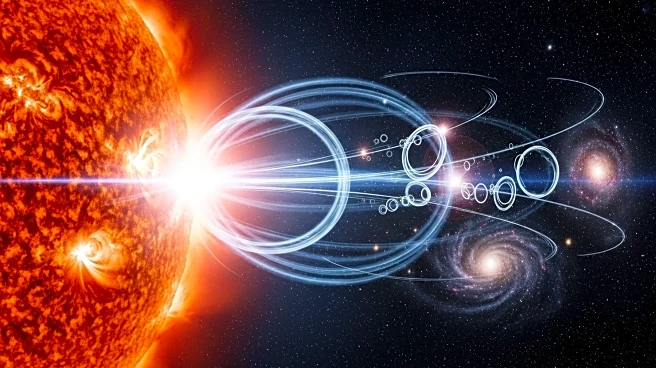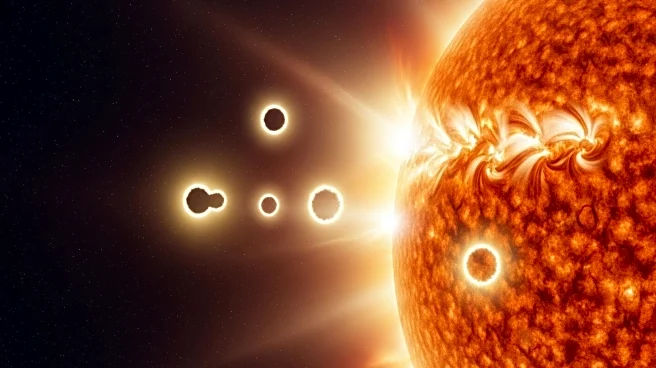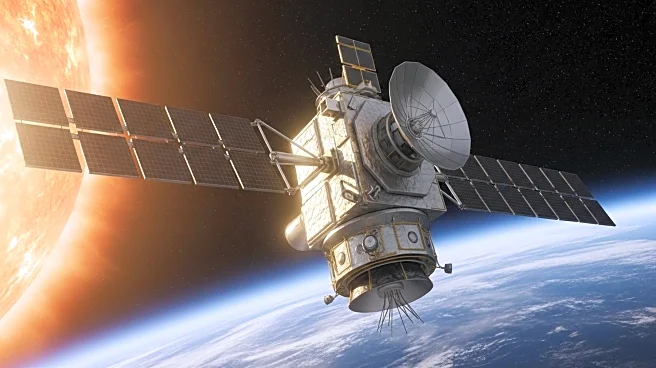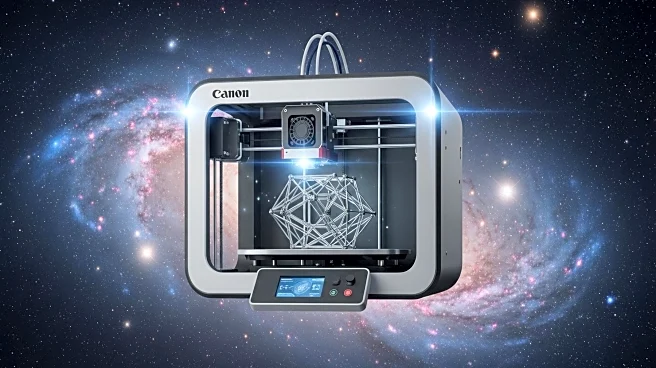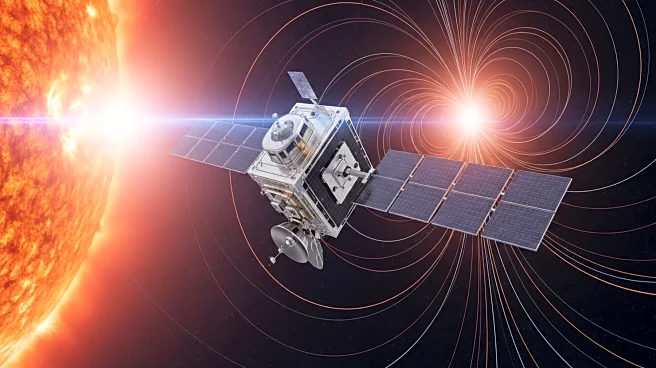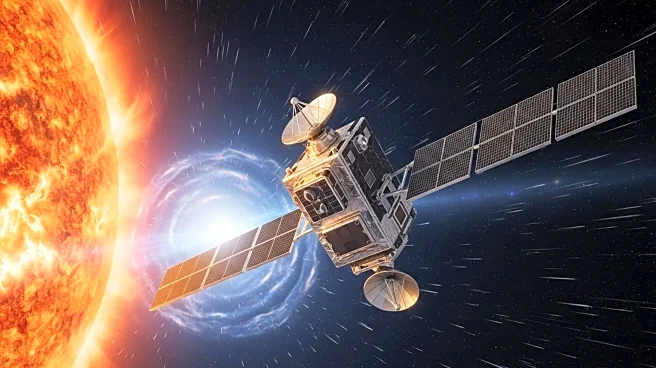What's Happening?
The Solar Orbiter mission, led by the European Space Agency, has identified two distinct types of Solar Energetic Electrons (SEEs) originating from the Sun. These electrons are traced back to solar flares and coronal mass ejections (CMEs), providing insights into the Sun's particle acceleration processes. The mission's findings are crucial for understanding space weather, as CMEs pose significant threats to spacecraft and satellites. By distinguishing between impulsive and gradual SEE events, researchers can better predict space weather impacts and protect technological assets.
Why It's Important?
Understanding the Sun's particle acceleration mechanisms is vital for space weather forecasting and the protection of spacecraft and satellites. CMEs, which release high-energy particles, can cause significant damage to technological systems. The Solar Orbiter's ability to trace SEEs back to their solar origins enhances our ability to predict and mitigate space weather effects. This research contributes to the safety and reliability of space missions, ensuring the continued operation of satellites and the protection of astronauts.
What's Next?
Future missions, such as ESA's Vigil and Smile, will build on the Solar Orbiter's findings to further explore solar activity and its impact on Earth. Vigil will provide continuous insights into solar events, while Smile will study the interaction between solar particles and Earth's magnetic field. These missions will enhance our understanding of space weather and improve forecasting capabilities. Continued collaboration among international research teams will be essential in advancing solar science and protecting technological assets.
